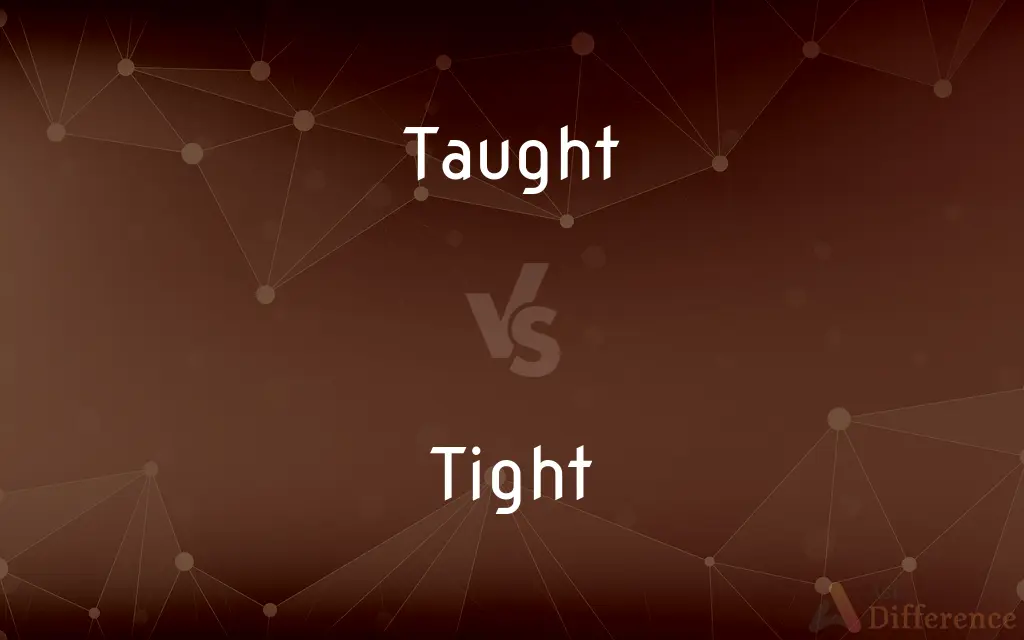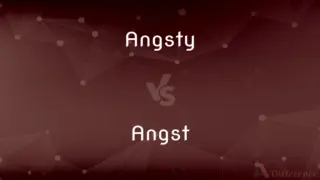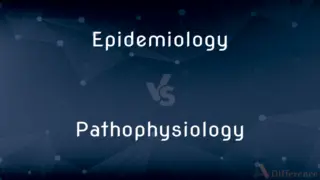Taught vs. Tight — What's the Difference?
By Fiza Rafique & Urooj Arif — Updated on March 4, 2024
Taught refers to something that has been instructed or educated, emphasizing learning, while tight describes a state of being firmly fixed, stretched, or filled, highlighting physical constraints.

Difference Between Taught and Tight
Table of Contents
ADVERTISEMENT
Key Differences
Taught is a past participle of the verb "teach," implying that someone has imparted knowledge or skills to another. It involves the process of education or instruction, where information, concepts, or techniques are transferred from one individual to another. This term is used exclusively in contexts related to learning and education, whether formal, such as in a classroom, or informal, like teaching someone a new skill. On the other hand, tight is an adjective that describes the physical state of something being firmly in place, stretched, or constricted. It can refer to objects, spaces, or even situations that are closely constrained, such as tight clothing, a tight grip, or a tight schedule. Tightness can imply a range of conditions from physical tension to the closeness of a fit or the lack of extra space or time.
While "taught" focuses on the acquisition and imparting of knowledge or skills, "tight" deals with physical dimensions, pressures, or constraints. For example, a rope can be pulled tight, but a person can be taught how to tie a knot. The distinction between these terms highlights the difference between the realms of education and physical conditions. Taught involves a cognitive process and interaction between individuals in a learning environment, whereas tight describes the physical characteristics of objects or scenarios, often implying constraints or limitations.
The use of taught is primarily in educational or instructional settings, reflecting the outcomes of teaching processes. It emphasizes the role of educators and learners in the transfer of knowledge. In contrast, tight is used in a wide variety of contexts, from describing the fit of clothing to the intensity of a situation, indicating a spectrum of physical and metaphorical tightness. This contrast between taught and tight illustrates the diverse ways in which English language terms can describe the nuances of learning and physical states.
Understanding these differences is crucial for correct usage in both written and spoken English. While taught enriches the context of education and learning, emphasizing the transfer and acquisition of knowledge, tight speaks to the physicality of objects, situations, and relationships, often implying a sense of pressure or constraint. These terms, though phonetically similar, serve distinct purposes in language, reflecting the broad range of human experience from intellectual endeavors to the tangible aspects of the physical world.
Comparison Chart
Definition
Past participle of "teach," referring to imparted knowledge
Describes being firmly fixed, stretched, or closely fitting
ADVERTISEMENT
Context
Education and learning
Physical conditions, dimensions, and constraints
Implication
Transfer of knowledge or skills
Physical tension, constraint, or closeness
Usage
Related to the process of learning or instructing
Applied to objects, situations, and physical states
Examples
Teaching a concept, learning a skill
Tight clothing, a tight grip, a tight schedule
Compare with Definitions
Taught
Taught relates to imparted knowledge.
She was taught French by her grandmother.
Tight
It signifies tension or pressure.
The rope was pulled tight during the tug of war.
Taught
Taught involves a learning process.
The principles taught at school form the foundation of our knowledge.
Tight
Tight can mean closely knit.
They share a tight bond of friendship.
Taught
It signifies the completion of teaching.
The skills taught in the workshop are valuable.
Tight
Tight is used for stringent conditions.
The project deadline is tight, leaving little room for delay.
Taught
Taught is used in the context of instruction.
The techniques taught by the coach improved the team's performance.
Tight
It refers to limited space.
Parking in the city center is tight.
Taught
It reflects an educational outcome.
He has taught mathematics for over twenty years.
Tight
Tight describes a snug fit.
The lid must be tight to prevent leaks.
Taught
Simple past tense and past participle of teach
Tight
Fixed or fastened firmly in place
A tight lid.
Tight screws.
A tight knot.
Tight
Stretched or drawn out fully
A tight wire.
A tight drumhead.
Tight
Of such close construction as to be impermeable
Cloth tight enough to hold water.
Warm in our tight little cabin.
Tight
Obtainable with difficulty or only at a high price
Tight money.
Tight
Snugly or with constriction
My shoes are laced too tight.
Tight
Intimately friendly.
We've grown tighter over the years.
Tight
Firmly or tightly;
Held fast to the rope
Her foot was stuck fast
Held tight
Common Curiosities
How can an object be described as tight?
An object is described as tight when it is firmly fixed in place, has a snug fit, or is under tension, such as tight clothing or a tight seal.
What does a tight schedule imply?
A tight schedule implies having very little spare time between appointments or deadlines, indicating a closely packed or stringent timetable.
What is an example of being taught?
An example of being taught is a student learning a new language in a classroom setting.
Can people be taught or tight?
People can be taught, meaning they can learn or be instructed. However, describing people as tight would refer to their physical state or metaphorically to their relationships or financial situations.
Can taught and tight be used interchangeably?
No, taught and tight cannot be used interchangeably as they refer to entirely different concepts: taught relates to education and learning, while tight describes physical states or constraints.
What skills can be taught?
A wide range of skills can be taught, from practical abilities like cooking and driving to intellectual skills such as critical thinking and problem-solving.
What does it mean when something is taught?
Taught means that knowledge, skills, or information have been imparted from one person to another through instruction or education.
How does the concept of tightness apply in finances?
In finances, tightness can refer to a situation where money is scarce or budgets are strict, implying financial constraints.
Is tight always negative?
Tight is not always negative; its connotation depends on context. For example, a tight bond implies a strong, positive relationship, while tight shoes can be uncomfortable.
How can one manage a tight situation?
Managing a tight situation often requires careful planning, prioritization, and sometimes creativity to navigate through constraints or limitations effectively.
Share Your Discovery

Previous Comparison
Angsty vs. Angst
Next Comparison
Epidemiology vs. PathophysiologyAuthor Spotlight
Written by
Fiza RafiqueFiza Rafique is a skilled content writer at AskDifference.com, where she meticulously refines and enhances written pieces. Drawing from her vast editorial expertise, Fiza ensures clarity, accuracy, and precision in every article. Passionate about language, she continually seeks to elevate the quality of content for readers worldwide.
Co-written by
Urooj ArifUrooj is a skilled content writer at Ask Difference, known for her exceptional ability to simplify complex topics into engaging and informative content. With a passion for research and a flair for clear, concise writing, she consistently delivers articles that resonate with our diverse audience.














































